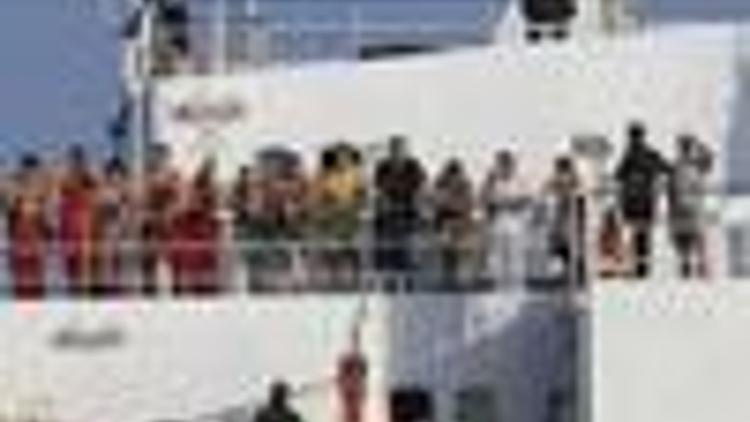Who are the pirates off Somalia's coast?
Güncelleme Tarihi:

The following are details of the pirates who hijacked a Saudi supertanker with a $100 million oil cargo, the boldest such attack yet and the culmination of several years' increasing activity.
* HOW DOES IT WORK?
-- The pirates live on "mother ships", storing arms, fuel and other supplies on board. They catch target vessels using high-speed boats, heavily-armed men boarding with rope ladders.
-- Intelligence sources say three trawlers in the
-- Around three speedboats may be used in an attack, each carrying six to 10 men armed with AK-47 assault rifles and sometimes rocket-propelled grenades.
* MONEY EARNED:
-- Pirates often treat hostages well in the hope of hefty ransoms. Most captured ships have brought ransom payments of more than $10,000 and more recently much more. The larger vessels captured in the busy shipping lanes of the
-- The money could be invested in trafficking khat, a mild narcotic leaf that is very popular in the region. Banned in many Western countries, khat is a flowering plant that is native to east Africa and the
-- Residents of Garowe and Bosasso, Puntland's other main town, say most of the hijackers are well known as the wealthy pirates have attained near-celebrity status in the area.
-- They have built palatial beach villas and other buildings, cruising around in expensive cars and marrying additional wives.
* WHO ARE THE PIRATES?
-- Men from the various clans who fought for the Somali warlords can supply the guns and military might. Men are also needed to operate technical hardware such as satellite phones and GPS. Fishermen are also useful because they know the sea.
* THE CONSEQUENCES:
-- Pirates have driven up insurance costs, forced some ships to go round
* ORIGINS OF PIRACY OFF
--
-- Militia were boarding boats on initially justifiable grounds to protect their waters from illegal entry by ships from countries including
-- Hundreds of illegal fishing boats were in Somali waters at any one time engaged in a $90 million a year business, mainly in tuna, the Kenya-based Seafarers Assistance Programme (SAP), reported in 2006. Toxic and industrial waste was also being dumped there, while there was a roaring trade in illegal charcoal.
-- Andrew Mwangura, then SAP coordinator, said in 2006 that they operated in two main groups calling themselves the "Somali Coastguards" and the "National Volunteer Coastguards". But then, they began to demand bigger ransoms to release ships and cargos.
* WHERE ARE THE PIRATES BASED:
-- The lawless former fishing outpost of Eyl in the semi-autonomous
-- Other groups are based off south

